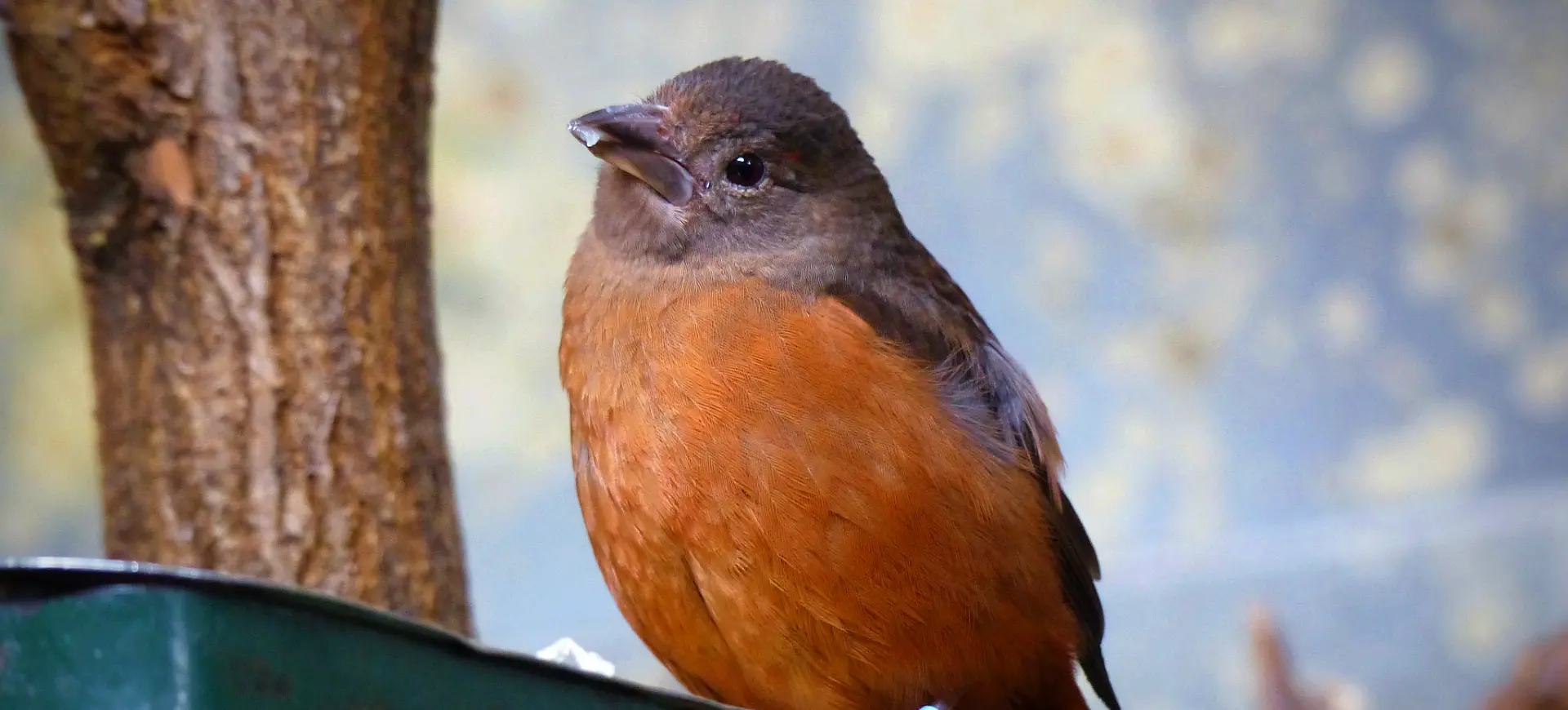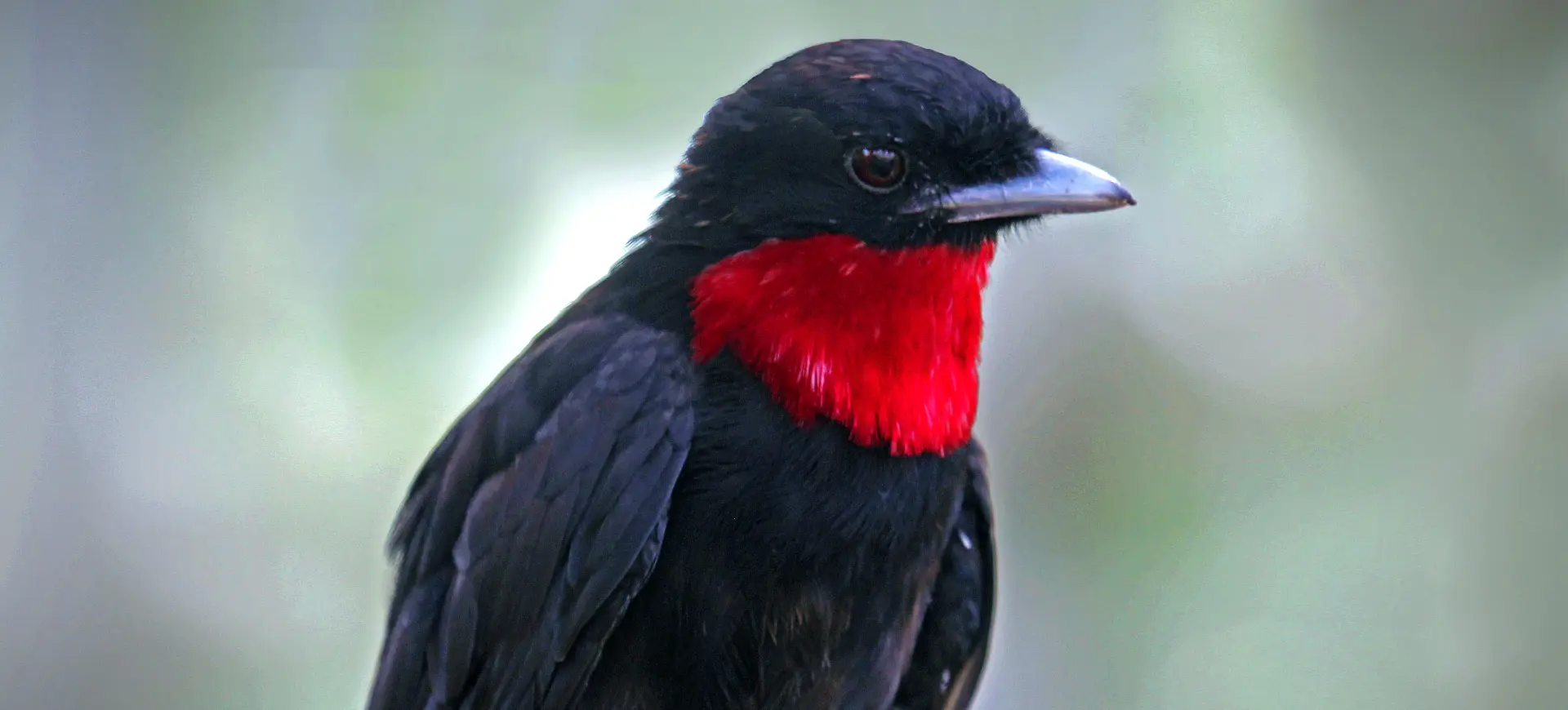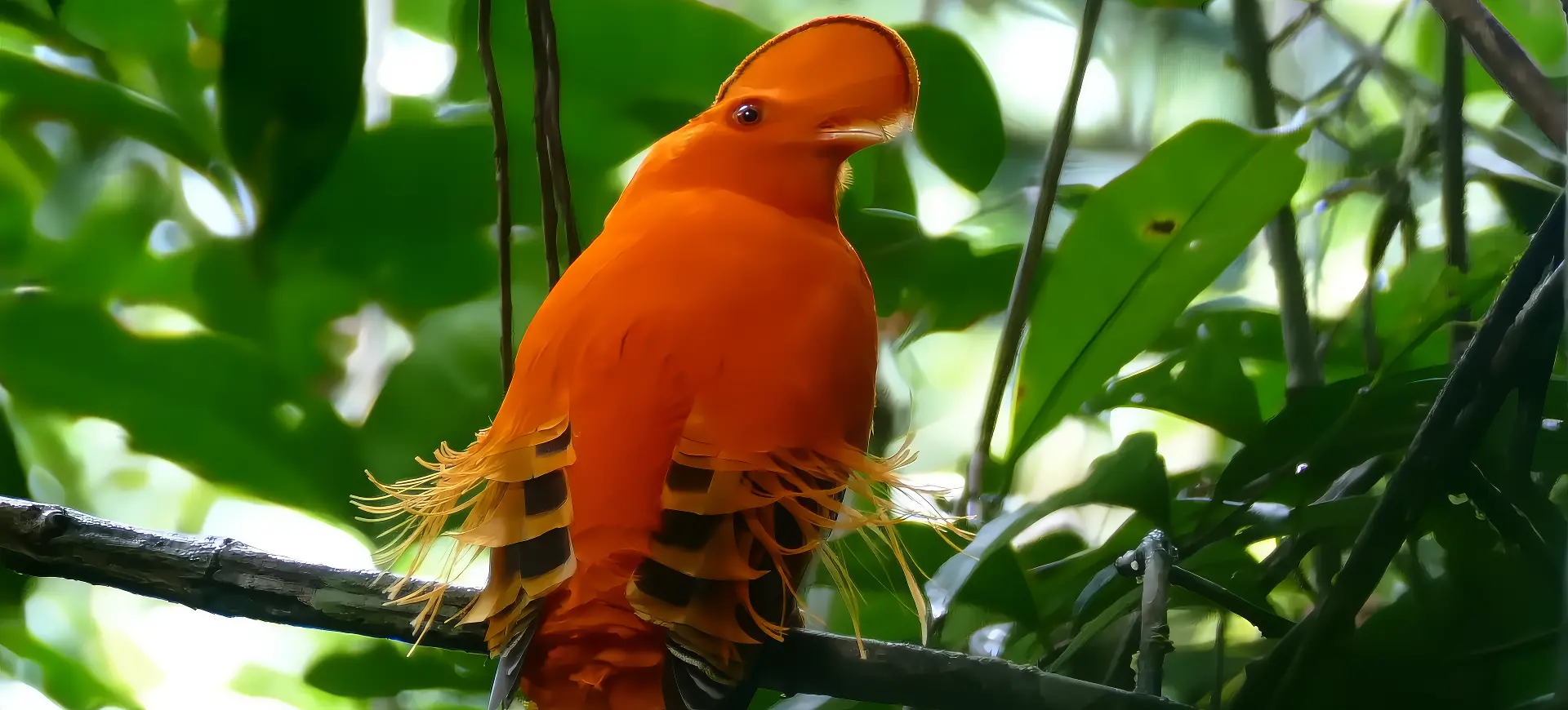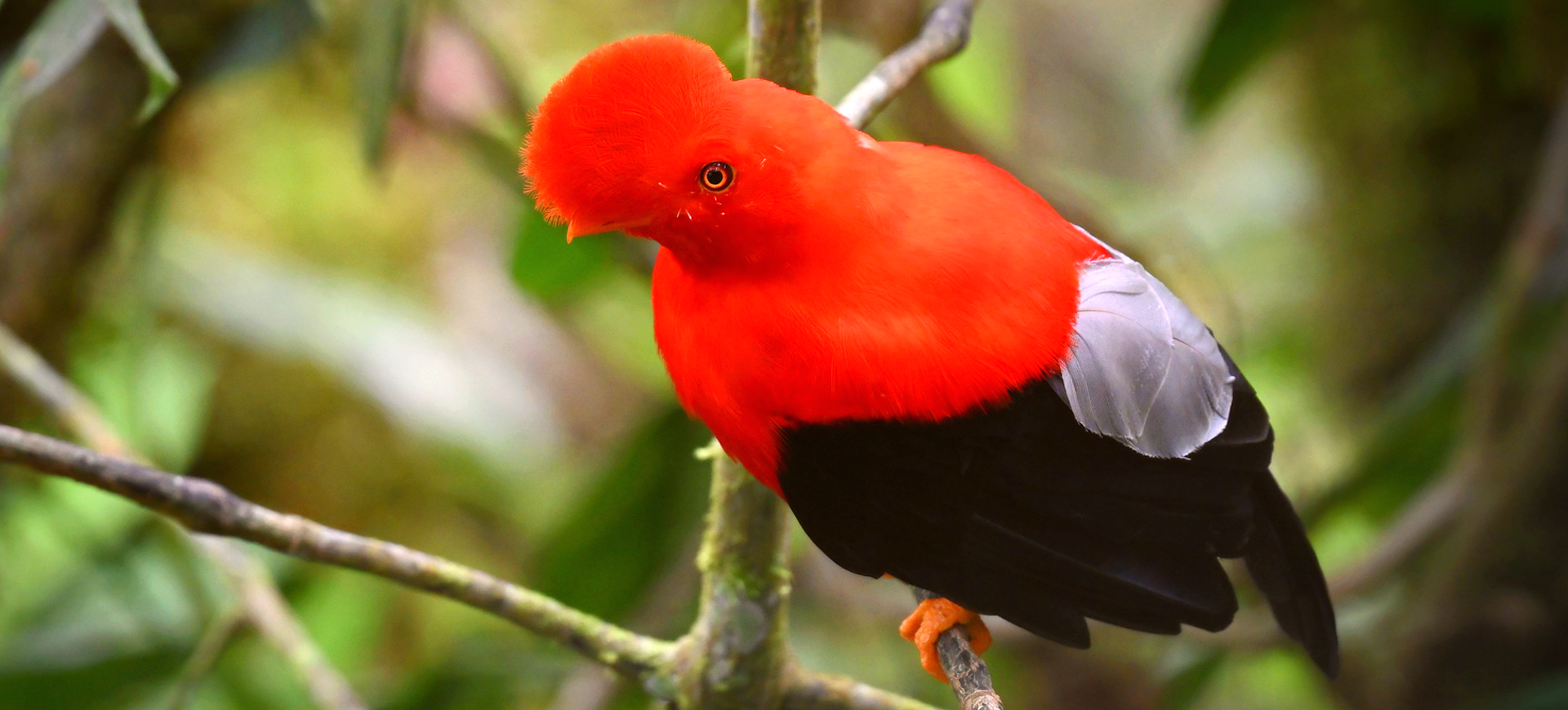Overview
The Screaming Piha is a notable bird species found in the rainforests of South America. It is renowned for its extraordinarily loud call, which is among the most intense of any bird sound in the Amazon. Its relatively nondescript appearance, with predominantly gray plumage, but its vocal prowess make it a key species in the auditory landscape of its habitat. The bird inhabits the dense understory and mid-canopy layers of lowland tropical forests, where it plays a role in the ecosystem as both a seed disperser and an indicator of healthy forest environments.
Despite its unassuming appearance, the male Screaming Piha’s call is a critical component of its mating rituals, used to attract females and assert territory against rivals. This call, a loud, piercing “caw-caw-caw,” can be heard over great distances, cutting through the dense forest air. The species is solitary or found in small groups, and it remains relatively stationary within its territory, relying on its vocalizations to communicate. The Screaming Piha’s diet consists mainly of fruits, contributing to seed dispersal within its forest habitat, a vital function for the regeneration and health of tropical rainforests.
The Screaming Piha’s adaptation to its environment is a testament to the evolutionary pressures of dense forest ecosystems, where visibility is low and sound plays a significant role in communication. The bird’s ability to project its call over long distances allows it to maintain a network of social and territorial interactions without needing physical proximity. This acoustic signaling mechanism underscores the complexity of rainforest ecosystems and the specialized niches that species occupy within them.
Taxonomy
Kingdom
Phylum
Class
Order
Family
Genus
Species
Type
Physical Description:
The Screaming Piha is a medium-sized bird, measuring approximately 9 to 11 inches long and weighing around 2.5 to 3 ounces. Its plumage is predominantly soft gray, with slightly darker wings and tail, providing effective camouflage in its forest habitat’s shadowy understory. The bird’s lack of vibrant coloration contrasts sharply with its vocal significance, making it a unique species among the diverse avian community of the Amazon.
Both males and females exhibit similar plumage, which makes sex differentiation challenging based on appearance alone. The Screaming Piha has a robust body, a broad head, and a short, stout bill adapted for fruit consumption. Its wings are short and rounded, suited more for quick, flitting movements through the forest understory than for long-distance flight. While understated, the bird’s physical characteristics are finely tuned to its life in the dense, biodiverse environments of the Amazon.

Lifespan: Wild: unknown || Captivity: unknown

Weight: Male & Female: 2.5-3 oz (70-85 g)

Length: Male & Female: 9-11 inches (23-28 cm)

Wingspan: Male & Female: 11-12 inches (28-31 cm)

Top Speed: Unknown
Characteristic:
Native Habitat:
The Screaming Piha is native to the Amazon Basin, inhabiting lowland tropical rainforests across a range that spans several South American countries, including Brazil, Colombia, Venezuela, Ecuador, Peru, and Bolivia. The species prefers dense forest environments where acoustic signals can be effectively transmitted. The bird’s habitat is characterized by high humidity, consistent rainfall, and a rich biodiversity that supports a complex ecosystem.
Within these rainforests, the Screaming Piha occupies territories in the understory and mid-canopy, areas that provide both the fruit resources it requires and the acoustic environment necessary for its vocalizations to carry. The conservation of these habitats is crucial for the survival of the Screaming Piha, as deforestation and habitat degradation pose significant threats to its populations and the broader rainforest ecosystem.
Climate Zones:
Biomes:
WWF Biomes:
Biogeographical Realms:
Continents:
Diet:
Diet & Feeding Habits:
The Screaming Piha is primarily frugivorous, eating large fruits found in its rainforest habitat. This dietary preference makes it an important agent for seed dispersal, aiding in forest regeneration. The bird typically forages alone or in small groups, utilizing its acute vision to locate fruit among the dense foliage of the rainforest canopy and understory.
In addition to fruits, the Screaming Piha may occasionally consume insects, supplementing its diet with protein. This opportunistic feeding behavior underscores the bird’s adaptability to the available resources within its environment. The Screaming Piha’s feeding habits not only fulfill its nutritional needs but also contribute to the ecological balance of its habitat, emphasizing the interconnectedness of rainforest species.
Mating Behavior:
Mating Description:
The Screaming Piha’s mating system revolves around the male’s vocal performance, which plays a central role in attracting females and establishing territory. Males perch conspicuously within their territory and emit loud calls to signal their presence to females and deter rival males. These vocal displays are a key aspect of the species’ reproductive behavior, with the loudest and most frequent callers often being the most successful in attracting mates.
Nesting occurs in the dense vegetation of the rainforest understory, where the female constructs a simple platform nest. The female is solely responsible for the incubation of eggs and the rearing of the young, a task she undertakes with dedication. The monogamous or polygynous nature of their mating system varies, with some males potentially attracting multiple females to their territory each breeding season. The reproductive success of the Screaming Piha is closely linked to the male’s ability to maintain and defend a territory with ample resources.
Reproduction Season:
Birth Type:
Pregnancy Duration:
Female Name:
Male Name:
Baby Name:
Social Structure Description:
The Screaming Piha is typically a solitary bird or found in small, loosely associated groups, particularly outside the breeding season. Males are territorial, using loud calls to establish and defend their territory from rivals. This territorial behavior underscores the importance of acoustic space in the species’ social interactions, where vocalizations serve as the primary means of communication.
During the breeding season, the social dynamics of the Screaming Piha revolve around the males’ vocal displays to attract females and the subsequent female nesting and rearing activities. The species’ social structure, characterized by territoriality and vocal communication, reflects its adaptation to the dense, complex environment of the Amazon rainforest.
Groups:
Conservation Status:
Population Trend:
The Screaming Piha is classified as Least Concern by the IUCN, reflecting its widespread distribution and stable population numbers within the Amazon Basin. This status is supported by the bird’s presence in various undisturbed forest habitats, where it continues to play a vital role in the ecosystem. However, the species’ reliance on dense forest environments makes it susceptible to deforestation and habitat fragmentation, which could pose future threats to its populations.
Conservation efforts to protect the Amazon rainforest and its incredible biodiversity are essential for the Screaming Piha’s continued stability. These efforts include establishing protected areas, sustainable land use practices, and initiatives to combat deforestation. The species’ Least Concern status should not diminish the importance of ongoing conservation work, as the health of the Amazon rainforest is critical not only for the Screaming Piha but for the global environment.
Population Threats:
The primary threat to the Screaming Piha is habitat loss due to deforestation for agriculture, logging, and mining activities within the Amazon Basin. These activities reduce the availability of suitable habitat for the species, impacting its ability to forage and reproduce. Climate change also poses a long-term threat, potentially impacting the rainforest ecosystem and altering the Screaming Piha’s habitat and food sources.
Preserving the Amazon rainforest is critical for mitigating these threats, requiring concerted efforts from governments, conservation organizations, and local communities. Sustainable development practices and enforcing environmental regulations are essential components of these conservation strategies, aiming to balance human needs with preserving biodiversity.
Conservation Efforts:
Conservation efforts for the Screaming Piha and the Amazon rainforest include establishing protected areas, reforestation projects, and initiatives to promote sustainable land use practices. These efforts aim to preserve the extensive habitats necessary for the species and to mitigate the impacts of deforestation and climate change. Environmental education and community engagement programs are also crucial, raising awareness of the importance of rainforest conservation and fostering local stewardship of natural resources.
International cooperation is key to the success of conservation efforts in the Amazon, as the rainforest spans multiple countries and is a critical component of the global ecosystem. Ongoing research and monitoring are essential for understanding the Screaming Piha’s ecology and assessing the effectiveness of conservation measures. The collective action of the global community is necessary to ensure the preservation of the Amazon rainforest and the myriad species it supports, including the Screaming Piha.
Additional Resources:
Fun Facts
- The Screaming Piha’s call is one of the most recognizable sounds of the Amazon rainforest, often used in films and documentaries to evoke the ambiance of the jungle.
- Despite its vocal prominence, the Screaming Piha’s dull plumage makes it less visually conspicuous in its forest environment.
- The bird’s ability to project its call over long distances is an adaptation to the dense forest habitat, where visibility is limited.
- The Screaming Piha is considered a bioindicator species, with its presence indicating the health of its rainforest habitat.
- Its diet of fruits makes it an important seed disperser, aiding in the regeneration of the rainforest.
- The species has a wide range across the Amazon Basin, highlighting the vastness and ecological diversity of the rainforest.
- Conservation of the Screaming Piha’s habitat benefits countless other species that share its environment, underlining the interconnectedness of rainforest ecosystems.
- The bird’s unique vocalizations contribute to the rich soundscape of the Amazon, adding to the region’s natural heritage.
- Research on the Screaming Piha’s vocalizations has contributed to our understanding of avian communication and territorial behavior.
- Despite its Least Concern status, the Screaming Piha relies on the continued preservation of the Amazon rainforest.









